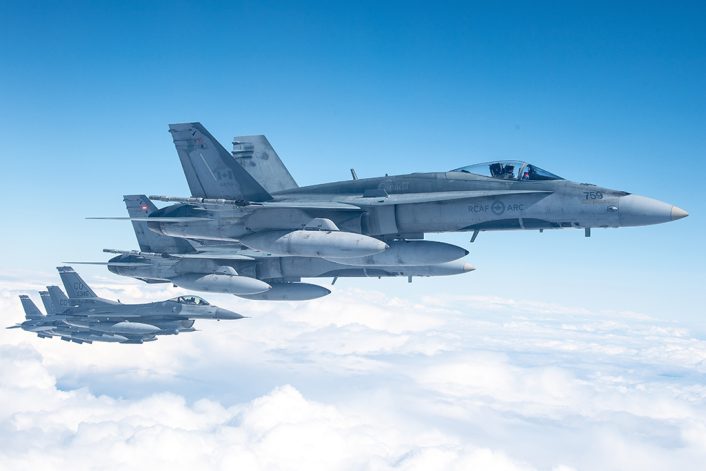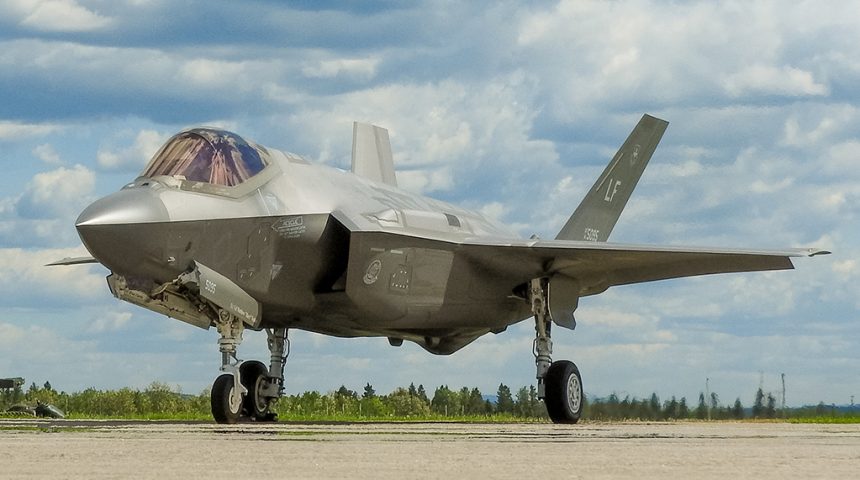Canada is closer to replace its CF-188 Hornet with the F-35 stealth aircraft.
As part of the Future Fighter Capability Project (FFCP) Canada aims to replace the Royal Canadian Air Force’s fleet of legacy CF-188 Hornets (local designation of the F/A-18) with a new aircraft. And the aircraft the Government has chosen is the Lockheed Martin F-35 Lightning 5th generation aircraft.
“The Government of Canada has reached another milestone in the competitive process to purchase 88 advanced fighter jets for the Royal Canadian Air Force (RCAF), which will ensure the requirements of the RCAF are met while also providing value for Canadians, generating high-value jobs in Canada as well as further growth for the Canadian aerospace and defence sector for decades to come,” says an official statement released on Mar. 28, 2022.
“Following a rigorous evaluation of proposals, the Government of Canada today announced it will now enter into the finalization phase of the procurement process with the top-ranked bidder, the United States (US) government and Lockheed Martin, for the F-35 fighter jet. This procurement represents the most significant investment in the RCAF in more than 30 years. It is essential for protecting the safety and security of Canadians, it will enhance our Arctic sovereignty, it will ensure we are equipped to better defend North America and it will help make sure we continue to meet our NATO and NORAD obligations well into the future.”
The Government of Canada launched an “open and transparent competitive process” to acquire new fighter jets in 2017. A formal request for proposals was released to eligible suppliers in July 2019. It closed in July 2020. Dassault and Airbus decided to withdraw their Rafale and Eurofighter Typhoon proposals in 2018 and 2019, respectively, saying that the requirements favored the US bids. Boeing, Lockheed Martin and Saab, proposing the Super Hornet Block III, the F-35A Lightning II and the Gripen E respectively, were asked to show how their bids could meet not only the military requirements of the RCAF for missions both at home and abroad, but also provide benefits for the national industry.
In November 2021, it was announced that the replacement proposal based on the F/A-18E/F Super Hornet, one of the favorite bids considered that the RCAF already operates the “legacy” version of the Hornet, was rejected as it did not meet the federal government’s requirements. Between the two remaining contenders, Lockheed Martin and Saab, Canada eventually chose the F-35.
“The multi-step assessment process took into account a wide range of factors, including capabilities, cost, as well as economic benefits and impacts. Recognizing that these fighter jets must effectively serve the RCAF and Canadians over the coming decades, Canada evaluated these aircraft against typical scenarios familiar to NATO and NORAD allies, which were further tailored to meet the needs of the RCAF, including Canada’s unique northern geography. We are confident that this competitive process will deliver the best results for the Canadian Armed Forces and for Canadians.”
As we explained in a previous article on the Canadian procurement of new fighter jets:
We should not forget that Canada is a partner in the Joint Strike Fighter program, with over CAD 713 million spent since 1997 to participate in the program that led Canadian companies to secure F-35-related contracts for over CAD 2.6 billion. The government decided to buy 65 F-35s in 2010 without competition, however in 2015 the plan was scrapped in favor of an open competition. Together with this competition, it was also decided to acquire 18 Super Hornets as temporary solution until the arrival of the new fighter aircraft. Following the trade dispute between Boeing and Bombardier, which even led to a so-called “Boeing clause” on firms that have launched trade disputes with Canada and are seeking a federal contract, the Super Hornet interim plan was cancelled.
The 18 interim jets, however, were still badly needed and, in the end, Canada decided to acquire 18 flyable Hornets from the Royal Australian Air Force, of which 12 single seater F/A-18A and 6 twin seater F/A-18B jets, and up to seven non flyable aircraft for use as spare parts and training aids. The fighters were being retired as the RAAF received its new F-35s and were delivered to the RCAF between 2019 and 2021. The “new” aircraft, which are being upgraded to a standard similar to the CF-188, will address the capability gap so that the Canadian Armed Forces are able to simultaneously meet both the NORAD and NATO fighter aircraft commitments.
In addition to that, a further upgrade known as Hornet Extension Project (HEP) has been started for the entire fleet of 94 F/A-18s (including the 18 Australian aircraft) to meet the most recent international aviation regulations and ensure interoperability with allies. The upgrade includes Automatic Dependent Surveillance-Broadcast (ADS-B), Honeywell GPS/INS systems, new AN/ARC-210 radios, airborne Joint Tactical Radios, upgraded Sniper targeting pod and enhanced mission computers and data transfer units.
Following this works, the 36 aircraft with the most remaining operational life will be further upgraded to obtain enhanced combat capabilities for operations against current threats. As part of the upgrade, these jets will receive the APG-79(V)4 Active Electronically Scanned Array (AESA) radar, AIM-9X Block II Sidewinder and AIM-120D AMRAAM air-to-air missiles, AGM-154 Joint StandOff Weapon (JSOW), ADM-141C Improved Tactical Air-Launched Decoys and the Automatic Ground Collision Avoidance System (Auto GCAS). The total cost of the two rounds of upgrades is of about CAD 1.3 billion.
The HEP upgrade will keep the Canadian Hornets relevant until 2032, when the replacement aircraft is expected to take over.

Among the Quick Facts highlighted by Canada’s Government in their official statement, there’s also the fact that Allies and security partners, ranging from the US, the UK, Italy and the Netherlands in NATO, to Australia, Japan and South Korea in the Indo-Pacific, use or are in the process of procuring the F-35. Indeed, the controversial Lightning jet has consistently won all the competitions it has entered, including the ones in Switzerland, Poland and Finland.
According to the Government of Canada, the procurement of the first aircraft should take place in 2025. Canada is preparing two main operating bases for its future fighter aircraft: 4 Wing Cold Lake and 3 Wing Bagotville,









